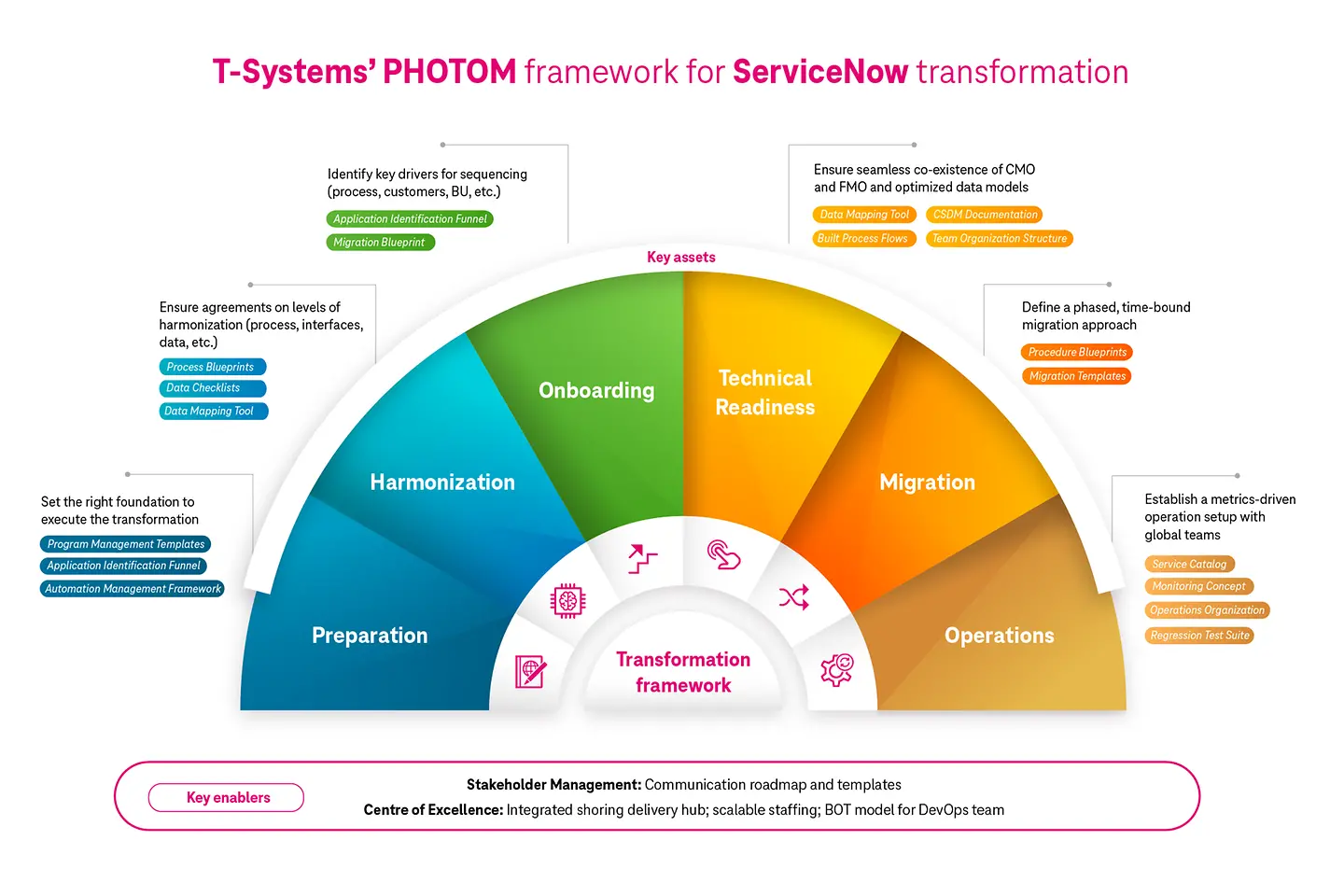
According to IDC, worldwide spending on digital transformation is going to reach $4 trillion by 20271, marking a shift from outdated systems to agile solutions vital for competitiveness. As companies adapt to the evolving technology landscape, digital transformation becomes essential. Let’s dive into the challenges organizations face and explore a step-by-step guide to overcoming them effectively.
Digital transformation offers a pathway to innovation, efficiency, and a competitive edge, but the journey is fraught with complexities that organizations must address strategically. Many obstacles often undermine the adoption process, slowing progress or even halting efforts. Below is an in-depth look at these challenges and their impact.
Organizations that depend on traditional legacy systems often struggle with inflexibility when integrating new digital initiatives, whether it's incorporating cloud or AI-driven solutions into mainframe systems or connecting Customer Relationship Management (CRM), Enterprise Resource Management (ERP), and other platforms across departments. This dependency extends to organizational processes and frameworks that, while proven reliable, are often incompatible with modern technologies. For example, a financial institution bound by strict data privacy regulations and rigid security protocols may struggle to adopt cloud-based solutions swiftly, because these legacy protocols often limit the agility required for seamless integration and quick deployment of new technologies.
Siloed working models pose a significant challenge, because departments often operate independently with distinct project management tools, data systems, security protocols, and governance standards. For example, a sales team may use a modern cloud-based CRM to track customer interactions, while the in-store sales team relies on an older, on-premises CRM. Such inter-departmental disparities, especially after mergers or partnerships, create inefficiencies and communication gaps that hinder cross-functional collaboration. Without unified governance and standardized processes, digital transformation strategies become fragmented, leading to delays and reduced impact. Cohesive governance is essential to align departments towards common transformation goals.
In mega transformational projects, unfortunately 70% of IT projects fail2. A vital reason for this high failure rate is often an ambiguous business case or poorly defined project costs. Many organizations even underestimate the complexity of these projects due to unclear objectives and incomplete data at the outset. This uncertainty also hampers effective planning, leading to budget overruns and missed objectives. A well-researched business case with tangible value drivers – covering licensing, hardware, infrastructure, contingency, expansion, maintenance, and support costs – alongside detailed financial forecasts is crucial for accurately determining digital transformation investments, mitigating risks, and optimizing budgets for successful project implementation.
When data is scattered across various systems and formats, it becomes difficult to access, integrate, and analyze accurately. This leads to inconsistencies, errors, and delays. Manual data handling, prone to human error, further exacerbates the issue in disparate systems, leading to a lack of accessibility and hindering real-time decision-making. Organizations often resort to intensive manual data handling, shifting data between incompatible tools and systems, which not only consumes resources, but also increases the risk of errors.
Cultural resistance to change is a recurring obstacle in digital transformation. Employees accustomed to legacy systems and established processes may resist the shift to new technologies, slowing down the rate of adoption. In an environment where rapid adaptation to evolving tools and systems is essential, fostering a culture of change acceptance is equally important. Additionally, the human element of transformation requires that employees not only understand the value of new tools, but also feel supported throughout the transition. Without proactive change management practices that address employee concerns, provide relevant training, and encourage a mindset open to adaptation, transformation efforts may fall short, resulting in underutilized resources and unrealized potential.
To address these complex challenges, companies need the right technology paired with a strategic partner that can tailor solutions to specific organizational needs. Effective digital transformation requires a comprehensive approach, combining technology with industry insight, skilled execution, and ongoing support. This is where T-Systems, with its extensive experience and ServiceNow capabilities, provides a valuable advantage.
T-Systems' approach to digital transformation is built on a five-step delivery model that ensures seamless alignment with business goals and needs. This strategic blueprint begins with the initial discovery, where major stakeholders participate in workshops to identify challenges, opportunities, and priorities for transformation. In the service mapping phase, customer needs are aligned with solution partner capabilities to design a tailored service package, addressing identified gaps and goals. Next, a solution proposal and roadmap are crafted, detailing expected outcomes, timelines, and investments, ensuring both parties have a clear alignment of expectations. Once agreed upon, contract closing formalizes the collaboration, setting service conditions. Finally, T-Systems’ service delivery is executed in iterative cycles, allowing flexibility to adapt to feedback and evolving business requirements, ensuring the transformation journey remains dynamic and responsive. This structured model, paired with ServiceNow’s advanced capabilities, provides organizations with a clear path to their digital transformation goals.
ServiceNow plays a crucial role in helping organizations address the challenges of digital transformation with cloud at the core. By bridging the gap between legacy systems and modern technology, it leverages automation, AI, and process optimization to streamline operations. This integration allows companies to enhance their services and remain agile. With ServiceNow, organizations can effectively address skill gaps and eliminate inefficiencies in their workflows, aligning their transformation strategies with long-term business objectives. T-Systems offers a comprehensive range of services, from business process consulting to ServiceNow implementation. With decades of experience across various sectors, particularly in IT Service Management (ITSM), we are well-equipped to support our clients. Our value proposition includes tailored solutions designed for specific industries, based on diverse cloud models. By combining ServiceNow’s capabilities with our industry expertise, we deliver customized solutions that meet the unique needs of each sector. Moreover, T-Systems collaborates closely with leading ServiceNow integration partners to enhance our offerings. This partnership enables our clients to fully leverage their ecosystem of tools and solutions, maximizing the effectiveness of their digital transformation efforts.

The first step in the PHOTOM framework focuses on establishing a solid foundation for digital transformation. Critical outcomes include defining the ambition and time horizon, setting targets and constraints, securing sponsorship, and identifying stakeholders across platforms, customers, portfolios, business units, and markets. Additionally, the target architecture – covering business, data, application, and IT – should be established. A workshop to address assurance and order process variations is also essential in this phase. Vital assets to support this step include program management templates and data.
In this phase, the focus is on ensuring that all processes and systems are aligned. Organizations need to agree on harmonization levels, definitions, and flows, particularly for quality assurance and order management (OM) processes. This includes standardizing the application landscape (platforms), streamlining interfaces, and optimizing data management processes. Data cleanup and classification, along with harmonizing fulfillers (business, delivery, etc.), are crucial to this step. Strategic assets here include process blueprints, data checklists and blueprints, and a data mapping tool.
The onboarding sequence determines the flow of transformation within the organization. Core outcomes involve identifying the important drivers for sequencing, such as customers, processes, business units, and support groups. Onboarding is approached both vertically (order to fulfillment) and horizontally (problem to solution). A migration blueprint is a vital asset to guide this process.
Technical readiness ensures that the systems, processes, and teams are prepared for the digital transformation journey. Important outcomes include ensuring the co-existence of Current Mode of Operations/Future Mode of Operations (CMO/FMO), developing process flows with code, and managing data through the Data Management and Archive (DMA) process. The Core Service Data Model (CSDM) is essential for standardization, along with aligning data behind SLAs. Defining strategic user groups and organizing the technical team are also a part of this stage. The important assets supporting this step include built-in process flows, CSDM documentation, performance-optimized ServiceNow code modules, a data mapping tool, and a structured technical team organization.
The migration step ensures a smooth transition through meticulous planning, comprehensive data preparation, and strong customer alignment. Key activities include migration execution, hypercare for post-migration support, and rollback execution for contingency management. Essential assets such as migration templates, procedure blueprints, a full-service catalog, and regression test suites enable efficient and reliable delivery.
Operations focus on transforming teams from CMO to FMO. This includes establishing dedicated application operation and maintenance teams and implementing robust guidelines for monitoring, performance, testing, and release management. These measures ensure a sustainable and high-performing operations framework.
To support the PHOTOM framework, enablers such as effective communication and staffing models are essential. Communication is facilitated through a roadmap and templates, ensuring clear messaging throughout the transformation. Staffing is supported by the establishment of a Center of Excellence (CoE), an integrated shoring delivery hub, scalable staffing models, and E2E development team steering. Additionally, a Build-Operate-Transfer (BOT) model for ServiceNow DevOps helps ensure the technical team is well-equipped to handle the demands of the transformation.
A global distributor of electronic components faced challenges with its customized ServiceNow implementation, struggling to maintain separate service portals for HR Service Delivery and IT Service Management. This fragmentation led to inefficiencies and hindered the user experience. T-Systems addressed these issues by focusing on four strategic pillars – optimizing the service catalog for improved efficiency, developing a unified employee portal for a cohesive experience, enhancing mobile accessibility, and improving knowledge management processes. The transformation resulted in a simplified interface that increased employee satisfaction and engagement. Consistent processes and automation improved operational efficiency, fostering transparency and better decision-making. T-Systems’ expertise, particularly from its team in India, played a crucial role in delivering a solution that unlocked new value for the customer.
Currently, T-Systems is actively working with ServiceNow to deliver end-to-end digital transformation solutions, leveraging the expertise of over 300 professionals within its ServiceNow CoE. The team is managing projects across industries – automotive, aerospace, banking, healthcare, and more – achieving a customer satisfaction score of 4.82 out of 5 through tailored, impactful strategies. With a network of 26,000 certified ServiceNow professionals on its platforms, including 1,681 certification holders and 364 accredited consultants, T-Systems operates delivery units in Germany, India, Hungary, Romania, Austria, and Iberia. This distributed presence allows them to respond immediately to client needs, driving transformation efforts that bring operational efficiency and innovation into the present, not just the future.
T-Systems, in collaboration with ServiceNow, exemplifies the transformative power of integrated digital solutions across various industries. We address unique client challenges through customized approaches and unique solution designs; we not only enhance operational efficiency, but also act on building a culture of continuous improvement. Our diverse expertise from health insurance to public transportation, highlights how organizations can achieve significant advancements in governance, user experience, and process automation. As businesses navigate the complexities of digital transformation, T-Systems and ServiceNow together stand ready to guide them on their journey, unlocking new possibilities for growth, transparency, and innovation. Embracing this partnership is not just about adopting a technology; it's about laying the groundwork for a future where organizations can thrive in an ever-evolving digital landscape.
1 IDC spending report, IDC, 2023, IDC website
2 BCG Study, BCG, 2023, BCG website